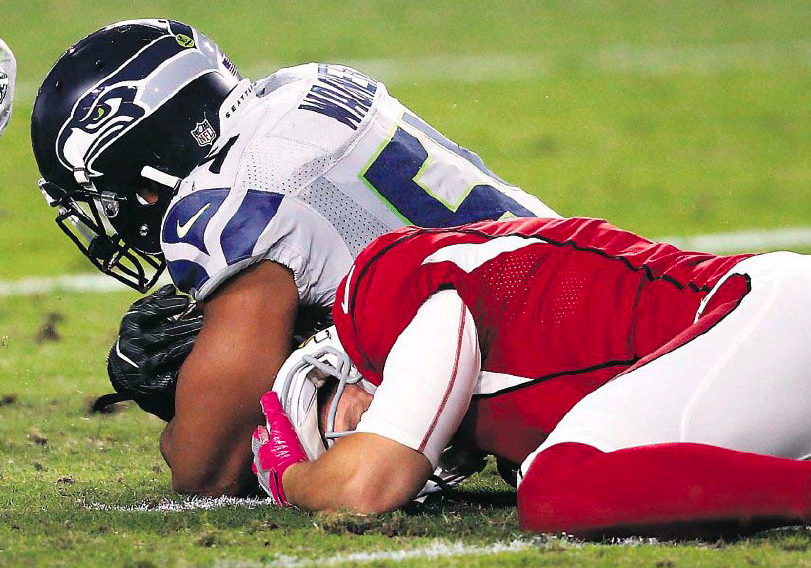A Hole in the Fortress
This article was written by Jean-François Codère and has been translated from the french language publication La Presse. The original online version is available in french here.
—-
Live sports events, beginning with the Olympics and NFL football, have long been perceived as the last bastion of the traditional television industry. Now, even this bastion is starting to show signs of weakness under siege from changing consumer habits.
There is no shortage of analyses or rationales to try to understand what might have led to such a significant drop in viewer ratings for NFL football this fall. And many of these reasons are a threat to the majority of sports.
US ELECTION
The atypical candidacy of Donald Trump, the unequaled campaign acrimony and the uncertain result until the end clearly had a positive effect on the network news ratings and, conversely, a negative effect on sports broadcasts. The NFL seems to have recovered. Out of the first 20 games broadcasted after the election, 10 drew more viewers than the corresponding game from the previous year. In the 9 weeks leading up to the election, only 9 of the 158 games broadcasted could say as much.
COLIN KAEPERNICK
The San Francisco 49er’s quarterback spurred controversy at the beginning of the season by systematically kneeling down on one knee during the singing of the American national anthem before games, as a sign of protest against racism. His gesture allegedly prompted many Americans to boycott football, either in opposition to Mr. Kaepernick or involuntarily out of a sense of unease, so as to avoid being subjected once again to these tensions that infiltrate other areas of their lives, analysts speculated.
BLAND GAMES
In a sport where the average playing career is just 2.6 years, fans have trouble identifying with star players, who are becoming increasingly rare. Many experts are also critical of the quality of play and the officiating. Out of the ordinary celebrations are prohibited. Match-ups between teams with very little national appeal have been thrust into major time slots. In a nutshell, there are questions the league needs to ask itself when it comes to the quality of its product.
It is also important to note that some sports, including basketball and baseball, have done well in the playoffs, but struggle to attract viewers for regular season games.
CONCUSSIONS
The NFL and football in general have been hit hard by new research on the effects of concussions. More and more parents, up to half of them according to some surveys, would not want their child to play it. Some viewers are put off by the knowledge surrounding the effects on athletes. However, some would be put off by the actions initiated by the NFL to soften the sport and thereby limit the damage. It’s tough to find a way out of this quandary.
THE TIME CRUNCH
Time demands on viewers are greater than ever, yet the days have not gotten longer. With this in mind, is having them spend three hours in front of their devices too much to ask? “I think so, in any case, I know that it’s difficult for me”, said Mark Silver Stadium Digital President, former Head of Digital Media at TSN and York University professor. “More than the overall attraction of the sport on TV, it’s the level of commitment that may pose a problem,” said John Simcoe, from PwC in Toronto. “There is cause for concern, for example, when you see a more dramatic drop in ratings halfway through the game.”
THE WANING APPEAL OF ATHLETES
“Thanks to the power of social media, sports fans can follow their athletes more than ever, especially in their private lives. But what they see, lives of young privileged millionaires, is not necessarily likely to thrill them,” Mark Silver added. “Sometimes, people don’t like what they see, to the point where they no longer watch the games.”
YOUTH HAVE CHECKED OUT
When they talk about television and sports to their students, professors André Richilieu, from the UQAM, Mark Silver, from York University, and Scott Henderson, from Brock University, all observe the same thing: few people actually subscribe to cable and, by extension, to sports channels.
CHANGING HABITS
If youth are not subscribing to cable or if older viewers are also watching, albeit occasionally, programs via Netflix and other comparable services, they are not in the process of flipping through channels and potentially stumbling upon a game in progress. Or hearing the broadcast time of the next game for that matter. “People would watch sports because they would watch television and happen upon these programs,” said Scott Henderson, professor of Sports Management at Brock University. “Nowadays, a lot of people have checked out.”
WHY WATCH EVERYTHING?
One of the characteristics of sports content is that it quite often consists of highlights that are interspersed with more mundane moments. With the spread of video via social media, it has become easier than ever to disseminate these highlights (goals, outstanding plays, etc.), which often appear on line within minutes after they occur. “The best excerpts are distributed very quickly on social media, so that I can see the big play without interrupting my life to watch the entire game,” Mark Silver says. As such, the sports fan can catch everything (or almost everything), without watching anything (or almost anything).
WHO IS PLAYING WHERE?
It’s a problem that is much less noticeable in Quebec, where sports are split up into few teams and two networks, but in the US, it may become a rather complex task to unravel national rights, regional rights and the multitude of networks they own. “Rights are so divided and sub-divided that it can be difficult to decipher where your team is playing,” Mark Silver concluded.
—-
This article was written by Jean-François Codère and has been translated from the french language publication La Presse. The original online version is available in french here.

